
Sign up for The Wanderful newletter
Join our growing community of people looking to live the simple life!
Let’s build your van now
Join our growing community of people looking to live the Simple Life






)
You’ve come to the right place!
The #vanlife movement is more active than ever. With the growing popularity, there are endless amounts of information on how to convert a van into a home or camper, but it’s sometimes hard to know exactly where to begin or what’s involved.

In order to help guide you in your research, we’ve prepared a high-level list of everything involved in a DIY Van Conversion.
Follow this step-by-step list and get a better understanding of what it takes to turn your dream van life into a reality.
You likely have no idea how much your van conversion will cost, at this point. There are so many factors that will come into play along the way.
But before going any further, consider how much you are willing and aiming to spend on your new home-on-wheels / ultimate road trip vehicle.
Your budget is something you will reference often and update as you go down this list.

Whether you want to keep your build as low-budget as possible with only the bare necessities, or you’re ready to jump into a higher-end build with all the comforts of home, pick a number.
Set a realistic budget for the overall project, and break that budget into specifics as you start to design your build.

Narrowing down what type of travel you intend on doing will help guide you in:
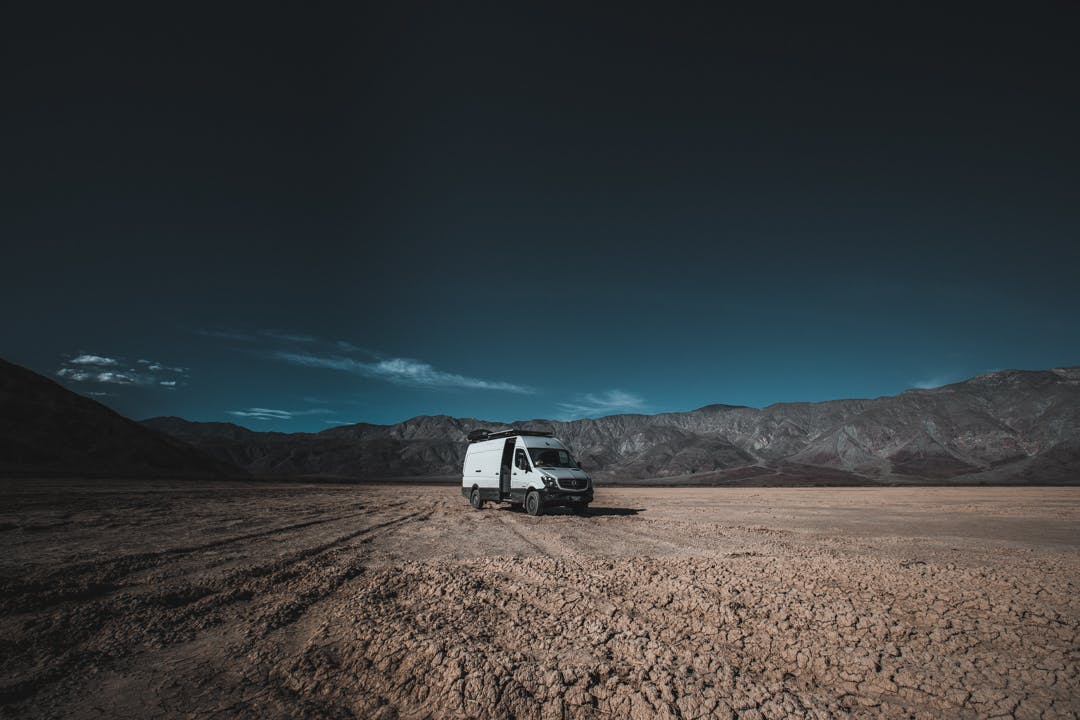
There are thousands of dreamy van conversions for you to pull inspiration from. Check out what other experienced vanlifers have done to their rigs and make note of the components that you’d love to incorporate into your build.
Instagram and Pinterest are great resources for you to pin or save ideas.
Whether it’s a full layout design or something as small as the latches on your storage cabinets, there are thousands of ideas to pull from and incorporate into your plans.
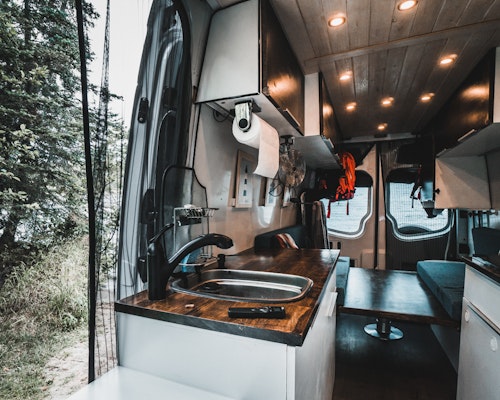
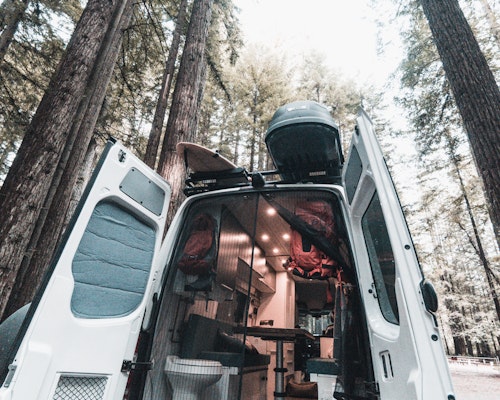
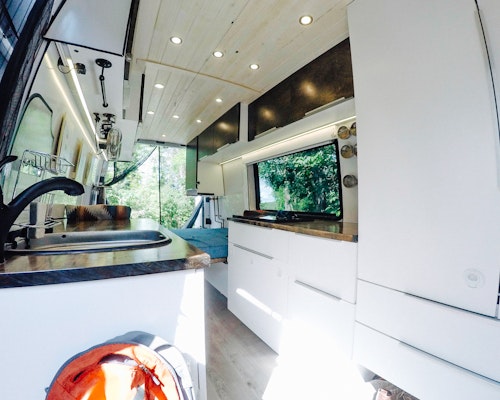
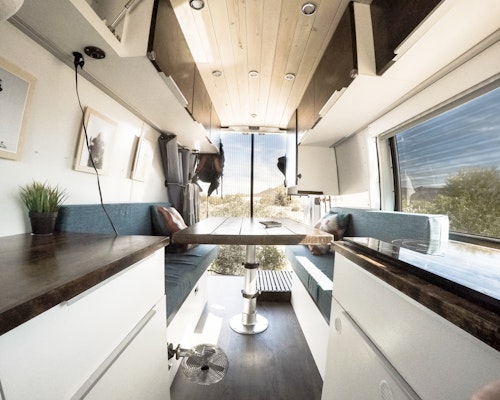


If you come across an amazing van build that you’d like to learn from, the creator may have a guide on how they built their van.
In fact, we have a build guide available which was written by yours truly (Scott from @comeswithaview).
View this post on Instagram
Now that you’ve been inspired by other experienced vanlifers, it’s time to evaluate your own needs and narrow down your must-haves and your nice-to-haves.
Ultimately, you need to decide if you’re wanting all (or some) of the comforts of home or the bare necessities to survive while on the road.
For example:
As you explore this list, start updating your budget with what these items may cost. You might find that the cost will move an item from a must-have to a nice-to-have, depending on your budget.
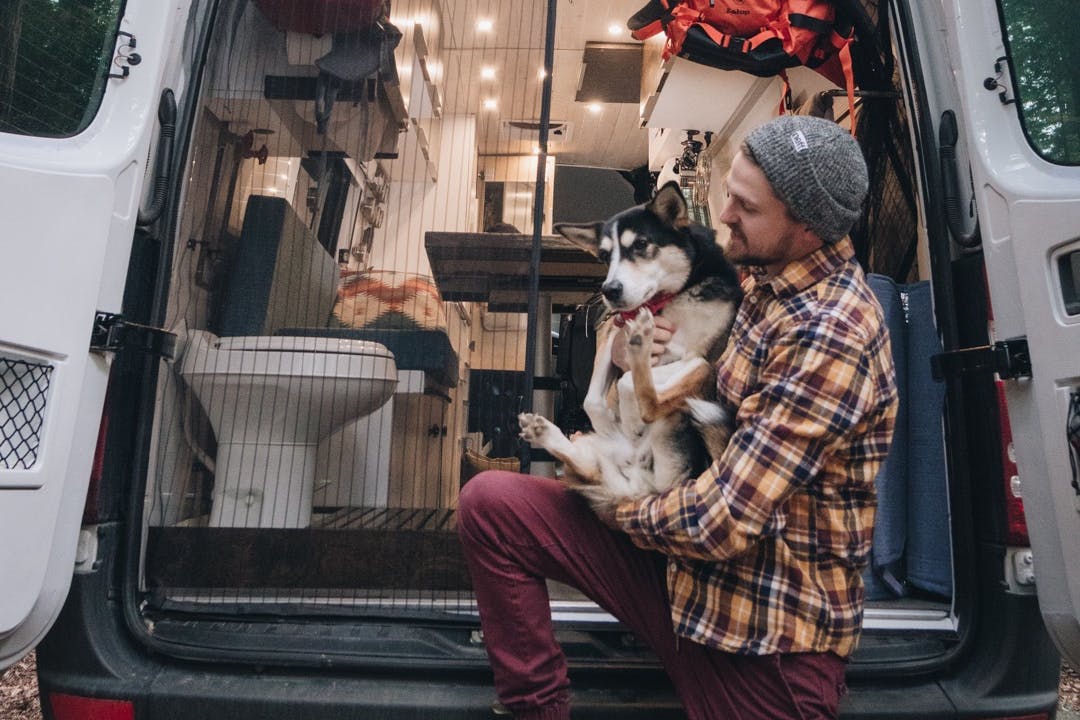
Now things are getting real… You’re ready to start shopping for your van!
Naturally, you’ll start your research online (Google, Facebook, Instagram). Start looking for private sellers or dealers in your area, or in areas you’re willing to travel to.
Another great resource for listings (mostly pre-converted vans) is Vanlife Trader.
If you’re looking to purchase a used van, here are 5 important things to look for.
We’ll get into how to choose the right van in a separate article.
Having a dedicated workspace for your van build will really streamline things and avoid a lot of wasted time (set up, pack up, repeat).
You will need somewhere (outside of the van) to store tools and materials, as well as space to cut, sand, paint, etc.
If you have access to a garage, that’s great. A driveway will certainly suffice but is less ideal. If your budget allows for it, you could also consider renting out some shop space.
Now it’s time to put all the information together that you’ve gathered above (must-have list, type of travel, inspiration, type of van, budget) and start mapping out the layout of your new camper van.
I like to start my van build planning the old school way… Pen and paper.
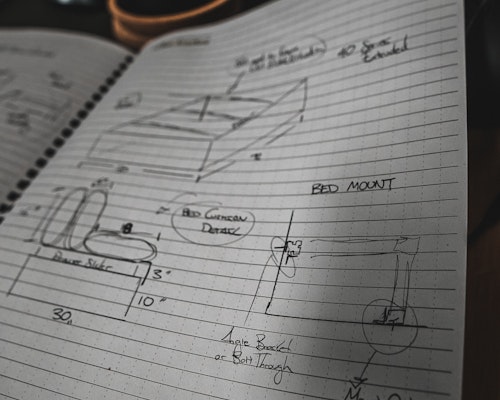
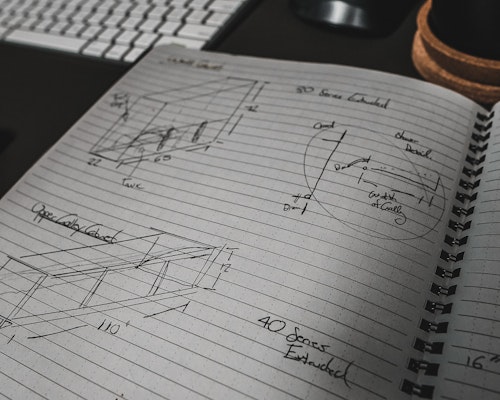
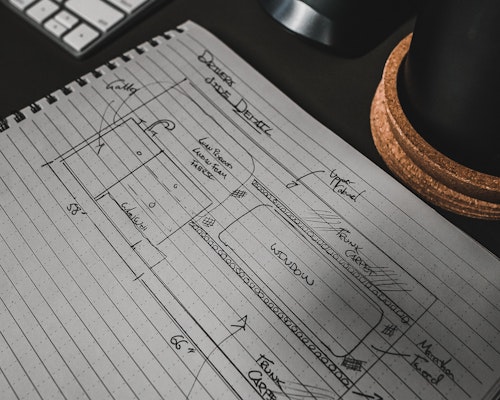
I also use a tool called SketchUp to map out various layout ideas and dimensions.
Another software option I’ve seen, which is specifically designed for van conversions, is Vanspace. I personally haven’t used this tool, but it looks pretty cool.

There are a number of tools needed for this DIY project but which tools you need will depend on what you’re including in your van. To give you a starting point, we made a list of the 11 Most Important Tools for any DIY Van Conversion.

Now it’s time to gut your van down to an empty chassis.
The level of prep required will really depend on the state your van was in when you purchased it. Whether your van is new or used, you’ll need to get absolutely everything out and clean it.
Your prep may also include rust repairs or removing the utility floor.
View this post on Instagram
Now that your van is completely empty, it’s time to measure out your floor plan.
One idea is to actually tape out where you want everything to go (bed, cabinets, etc) so you can get a good visual on how the space is going to be used.

As you can see, there is a lot of preparation that comes before you can actually get started on your van build.
The steps to converting your van will depend on what you’ve included in your designs. At a very high level, here is an overview of all the different components that will need to be considered for your van conversion.
Once you’ve completely gutted your van, the first step is to insulate it.
There is a lot of conflicting information online about whether or not to insulate your van and what materials are best to use.
Our opinion is that it is always worth it to insulate your van (walls and flooring). If you are going to be spending any time in colder climates, it’s especially important.
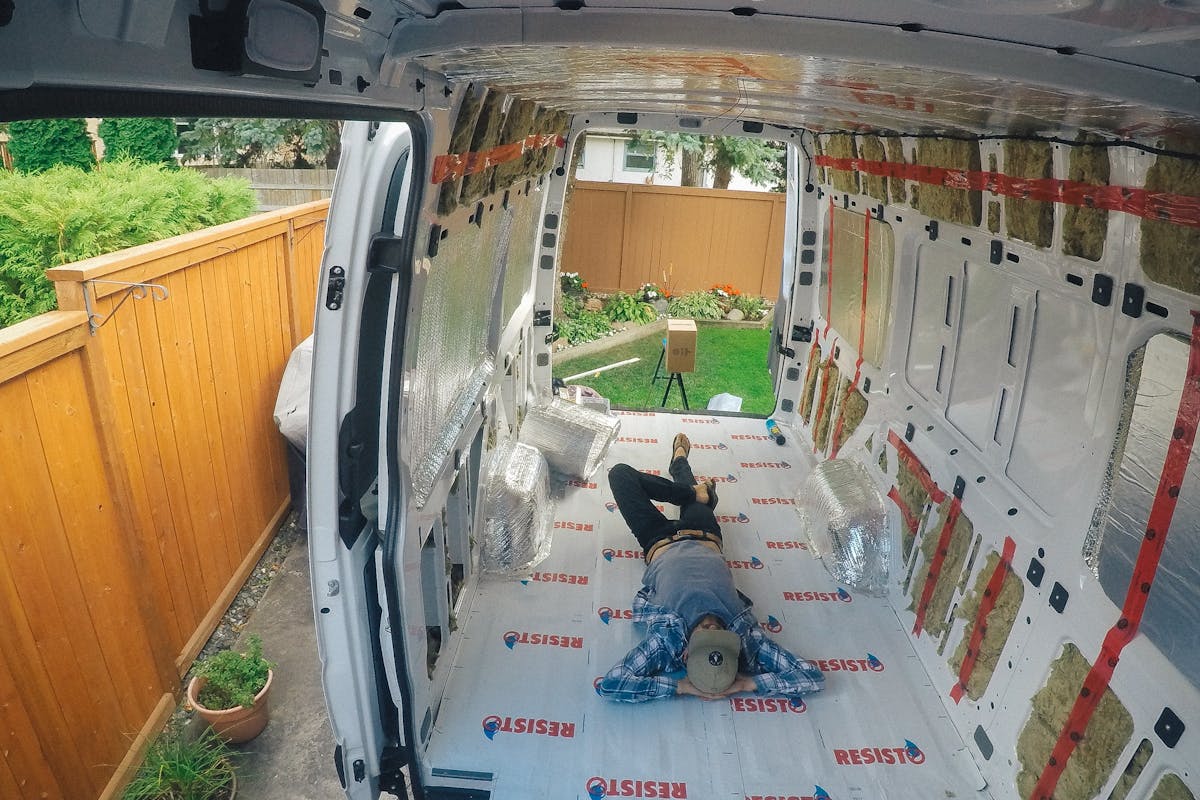
There are many different flooring options you could consider for your van build. The main things to keep in mind when choosing your flooring is that you go with something quite thin and durable.
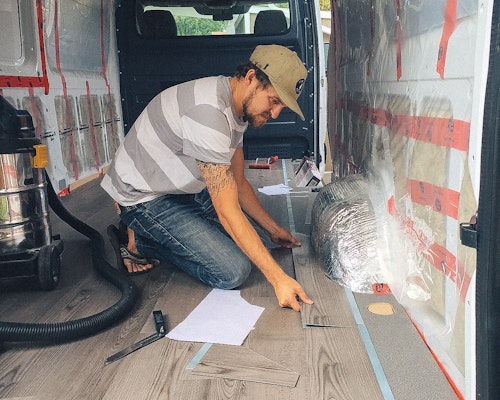
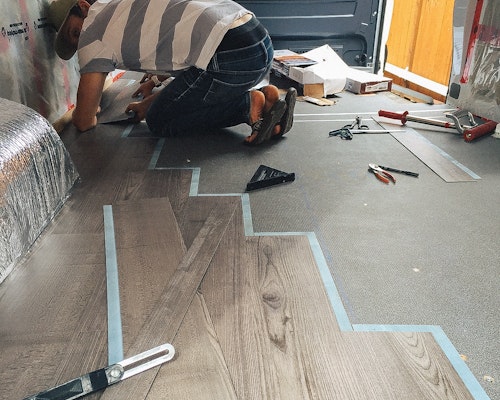
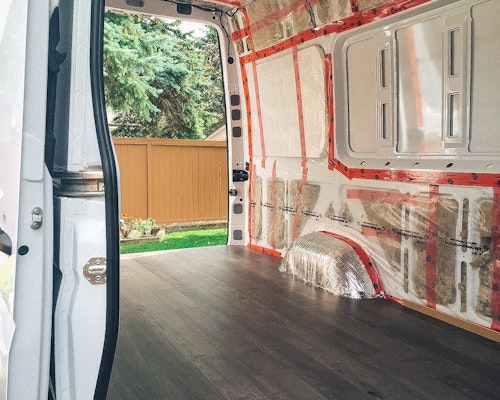
The solar and electrical system is one of the most daunting tasks during the entire process and likely an area you’ll need to do the most research in.
Ultimately, you need to calculate how big of a system you need to meet your daily usage. This is no easy task… Most people don’t think about their daily power consumption.
Some things to consider would be:
Some brands worth checking out would be:



Now it’s time for the scariest part… Cutting holes in your van! Don’t worry, it’s not that bad.
A popular brand for van windows is CR Laurence. Here’s a video on how to install CR Laurence Windows in a 2019 Sprinter Van.
Once you’re ready to cover up the insulation and electrical cables, it’s time to put up your walls and ceiling.
Be sure to pick materials that are:
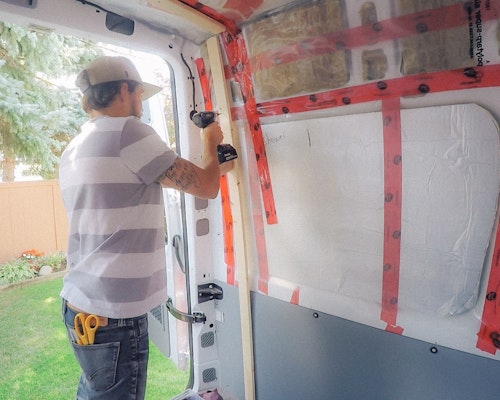
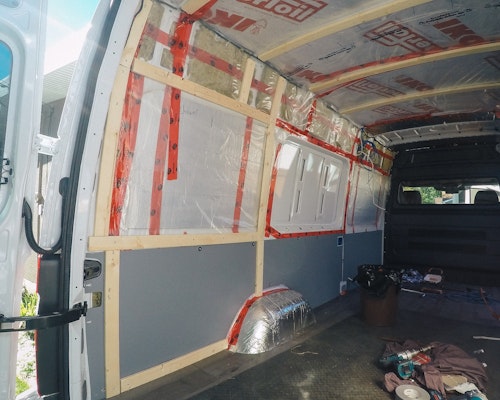

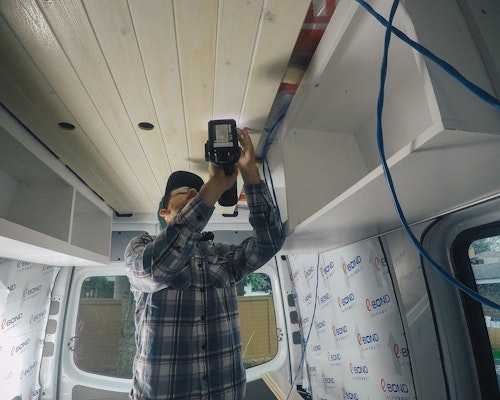
Whether you’re chasing snow or not, you will likely find yourself in some pretty chilly overnight temperatures. In order to stay warm in the van, you’ll want to install a good heat source.
There are various heater options that range in price, quality, and safety. A popular heater in the vanlife community, and one we certainly recommend, is the Espar Airtronic D2 Heater.
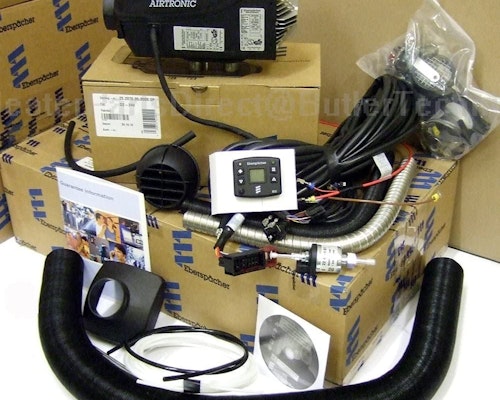
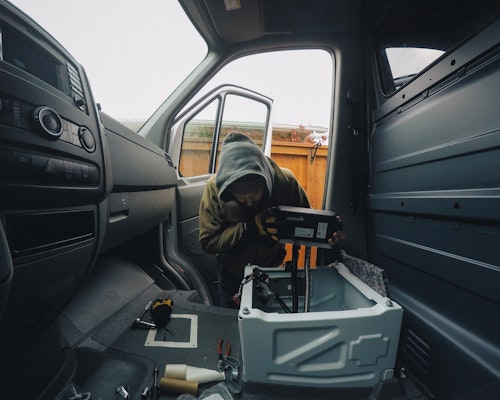
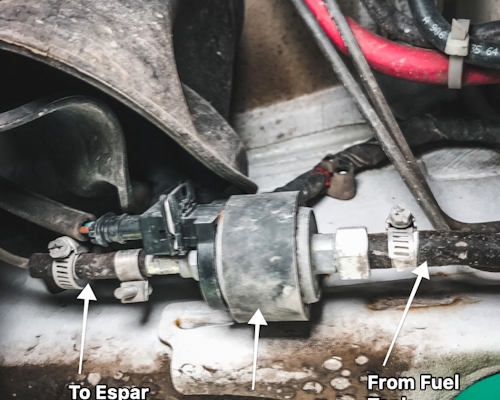
Dishes, food, clothes… Even the bare necessities you bring into your new tiny home-on-wheels need to be organized and stored.
Building cabinets is one of the lengthiest parts of the van build, depending on your skillset.

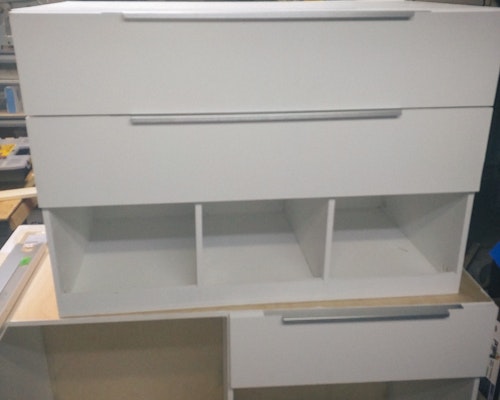
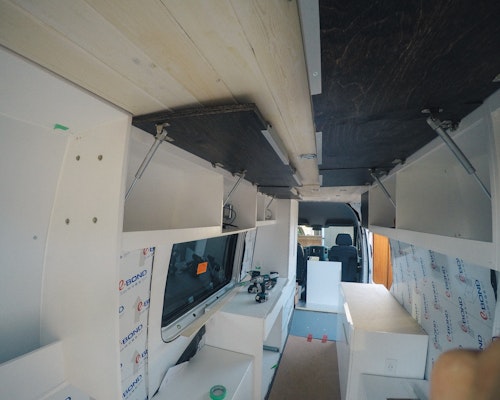
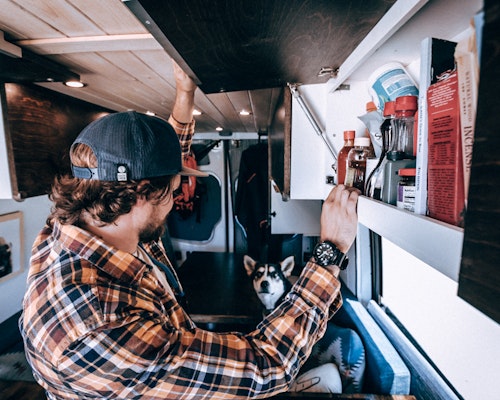

Having a great water system is a big step to turning your van into a comfortable living space. While some people have running water on their must-have list, others choose to use other facilities outside the van for showering, washing hands, dishes, etc.
Here are 8 time-saving tips on plumbing your camper van.

One of the most asked questions for vanlifers… Where do you go to the bathroom??
Not everyone will have the same answer. Some vanlifers choose to install a toilet in their van, others prefer to use campground facilities, public washrooms, or even the great outdoors.
If a toilet and/or shower are on your must-have list, this would be next up in the van build.
3 Most Common Camper Van Bathroom Options (with Pros & Cons)

In order to get the airflow you need in your van, ventilation should be a priority. Good ventilation will help with climate control, avoiding condensation, cooking smells, etc.
For those that are looking to cook inside their van, the kitchen will be a highly used area. Just like an ordinary kitchen at home, van kitchens commonly include:

All the steps listed above form, what we would consider, a typical van build. There are, however, endless amounts of upgrades you could make to your van above and beyond this list.
You may consider:
A suspension upgrade by Van Compass
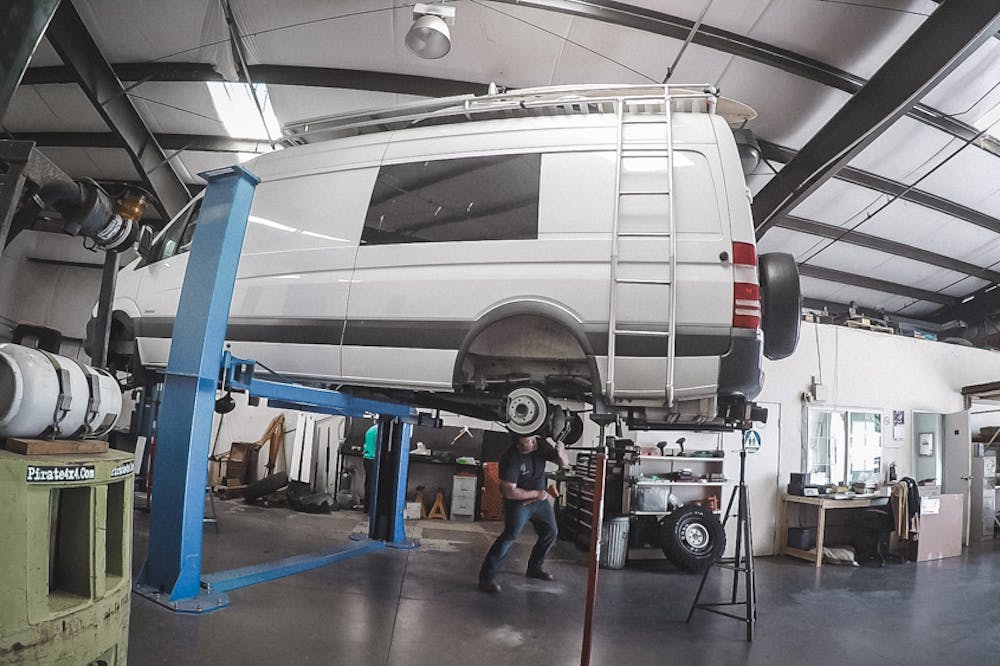
A Cargo Box from Owl Vans
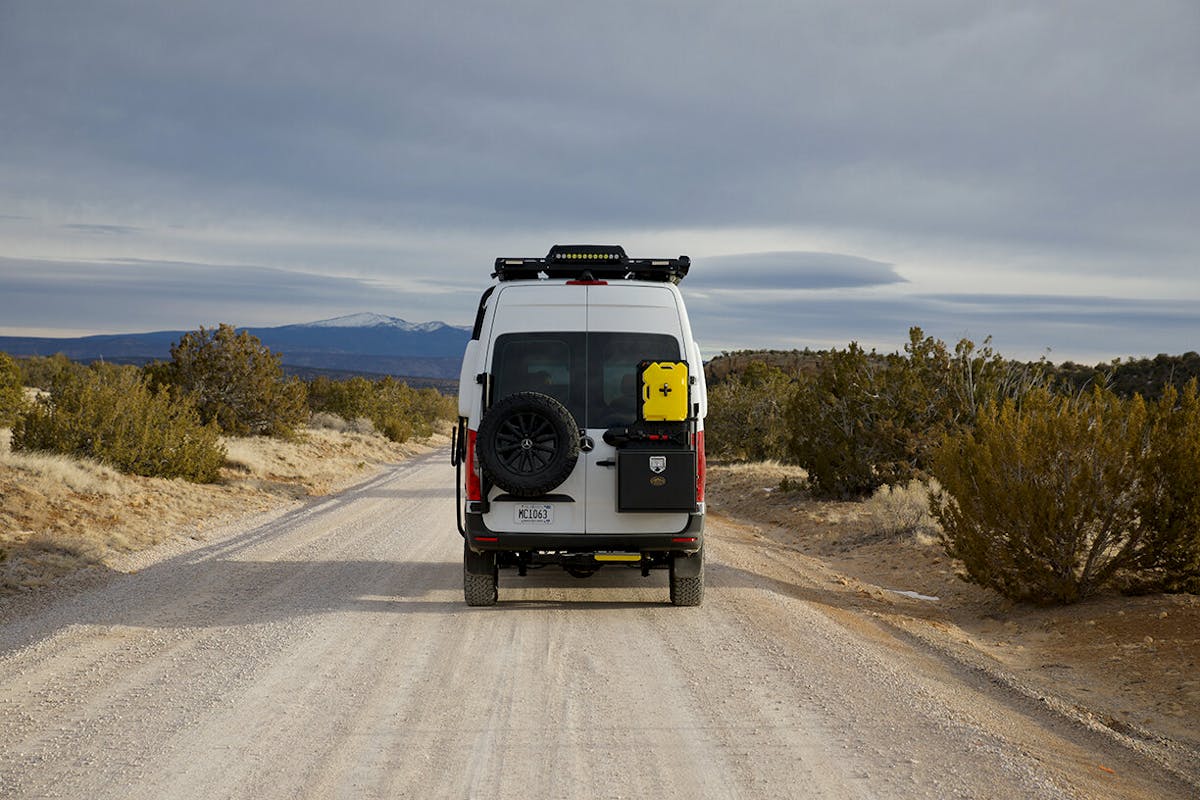
A roof rack

Hopefully this list has given you a good insight into what it takes to complete an amazing DIY Van Conversion. Much like building your own home, what details go into your van is really up to you and your lifestyle.
Good luck with this challenging project! The pride you will feel from building your own home-on-wheels will be worth it.
)
When I started living in my van full-time, I was so stoked to hit the road that all I had was a platform for my bed and some minimal storage.
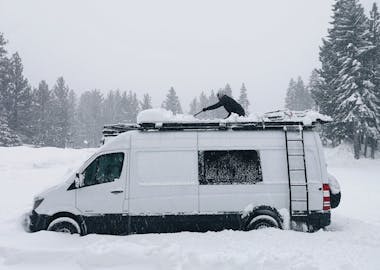)
If colder temps are in your vanlife future, it’s time to think about how you plan to winterize your van.
)
Insulating a van’s floor is often what separates the professionals from the DIY community.